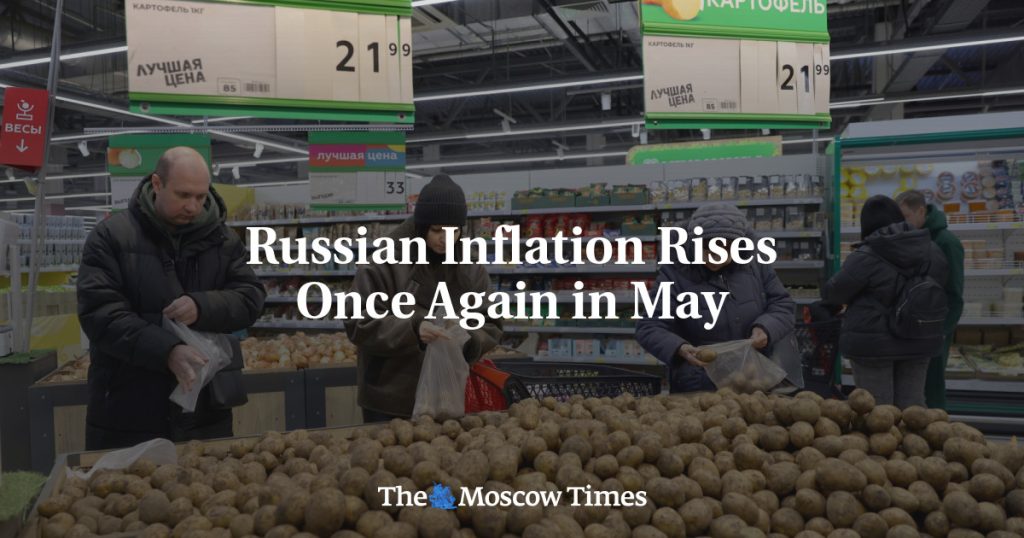The pace of inflation in Russia picked up in May as government spending to support the military offensive in Ukraine is overheating the economy. This increase in spending has helped Russia’s economy amidst Western sanctions but has also led to surging prices and labor shortages in various sectors unrelated to the conflict. In May, inflation reached 8.3% annually, the highest rate since February 2023, compared to the official target of 4.0%. The Central Bank of Russia is under pressure to further increase interest rates to contain inflation, with the possibility of a rate hike in the future if prices continue to rise.
The Central Bank maintained its key interest rate at 16% last week but indicated that it may need to raise borrowing costs if inflation does not slow down. German Gref, CEO of Sberbank, warned that Russia’s economic growth is “fragile” as it is heavily reliant on government spending to boost wages and consumer spending, rather than investment or productivity gains. This reliance on public expenditure raises concerns about the sustainability of Russia’s economic growth in the long term. The country’s current inflation rate poses a challenge for policymakers who must balance the need to control prices with the potential impact on economic growth.
The continued escalation of inflation in Russia reflects the broader economic impact of the conflict in Ukraine and the subsequent sanctions imposed by Western countries. While government spending has cushioned the economy from the effects of sanctions, it has also contributed to rising prices and labor shortages. The Central Bank’s decision to maintain its interest rate at 16% indicates a cautious approach to managing inflation, with the possibility of further rate hikes to come. Russian policymakers face a delicate balancing act as they seek to control inflation while sustaining economic growth in the face of external pressures.
The warning from Sberbank’s CEO about the fragility of Russia’s economic growth underscores the challenges facing the country as it navigates the impact of the war in Ukraine and sanctions from Western nations. The reliance on government spending to drive consumer demand raises questions about the sustainability of Russia’s economic model in the long term. Without a shift towards investment and productivity gains, the economy may struggle to achieve stable and sustainable growth. The current inflationary pressures highlight the need for policymakers to adopt a more comprehensive approach to economic management that addresses structural issues.
Inflationary pressures are likely to persist in Russia as long as the conflict in Ukraine continues and the country remains subject to Western sanctions. The Central Bank’s efforts to control inflation through interest rate hikes may help to stabilize prices in the short term but could also hamper economic growth if borrowing costs rise too steeply. Balancing the need to contain inflation with the imperative of sustaining growth will require policymakers to adopt a nuanced and targeted approach to economic management. Addressing underlying issues such as labor shortages and supply chain disruptions will be crucial to achieving a more stable and resilient economy in Russia.
In conclusion, the acceleration of inflation in Russia in May underscores the challenges facing the country’s economy as it grapples with the impact of the conflict in Ukraine and Western sanctions. The reliance on government spending to support economic growth raises concerns about the sustainability of Russia’s economic model in the long term. Policymakers must adopt a multifaceted approach to economic management that addresses structural issues such as labor shortages and supply chain disruptions. Balancing the need to control inflation with the imperative of sustaining growth will be crucial to achieving a more stable and resilient economy in Russia in the future.


